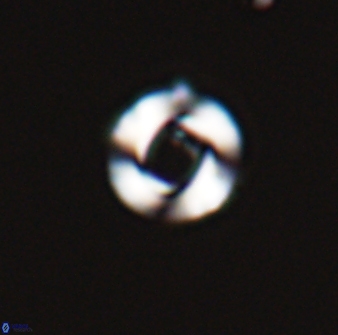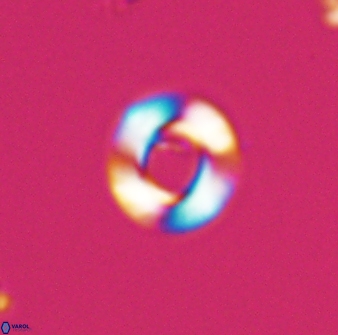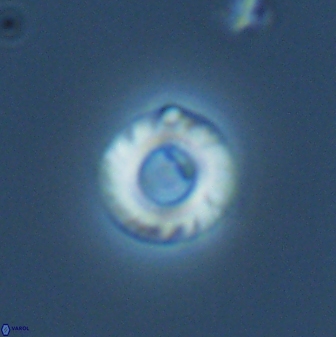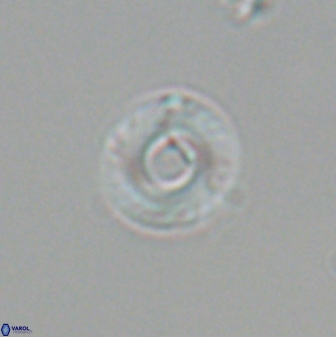Reticulofenestra looseae
Set number: 1679
-
1
-
2
-
3
-
4
-
5
-
6
10µm
Set number: 1678
-
1
-
2
-
3
-
4
-
5
-
6
-
7
-
8
10µm
Reticulofenestra looseae is a medium-sized species, ranging from 5.0 to 8.0 μm, and is strictly circular. It is characterised by a narrower pelaga than the width of the void central area, which appears square, and an indistinct, narrow tube cycle.
In honour of S. Loose, Denbighshire, North Wales, United Kingdom.
Maximum diameter = 6.19 μm
The diameter of the central area = 2.53
The width of pelage = 1.83
Optical Properties: The pelaga of Reticulofenestra looseae exhibits first-order white interference colours. On the distal side, this species displays inclined dextrogyre extinction lines with angles typically around 19° on the distal shield and parallel extinction lines with angles of 0° on the tube cycle, and it shows length-fast (-) elongation.
Reticulofenestra looseae can be distinguished from Reticulofenestra primitiva based on several features. The shape of Reticulofenestra looseae is circular, whereas Reticulofenestra primitiva is sub-circular. Additionally, the central area of Reticulofenestra looseae is much broader than the smaller central area of Reticulofenestra primitiva. While Reticulofenestra looseae has a rectangular central area, Reticulofenestra species in the Miocene have a circular central area.
Varol, O. 2025. A practical guide to optical studies of calcareous nannofossils. Grzybowski Foundation Special Publication, 29, 222 pp.



